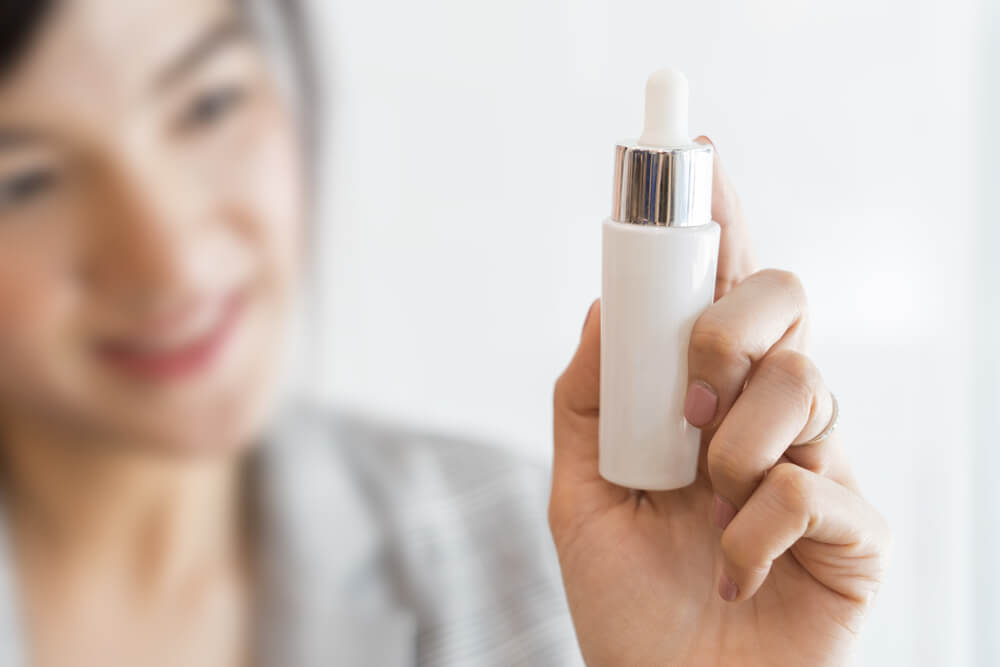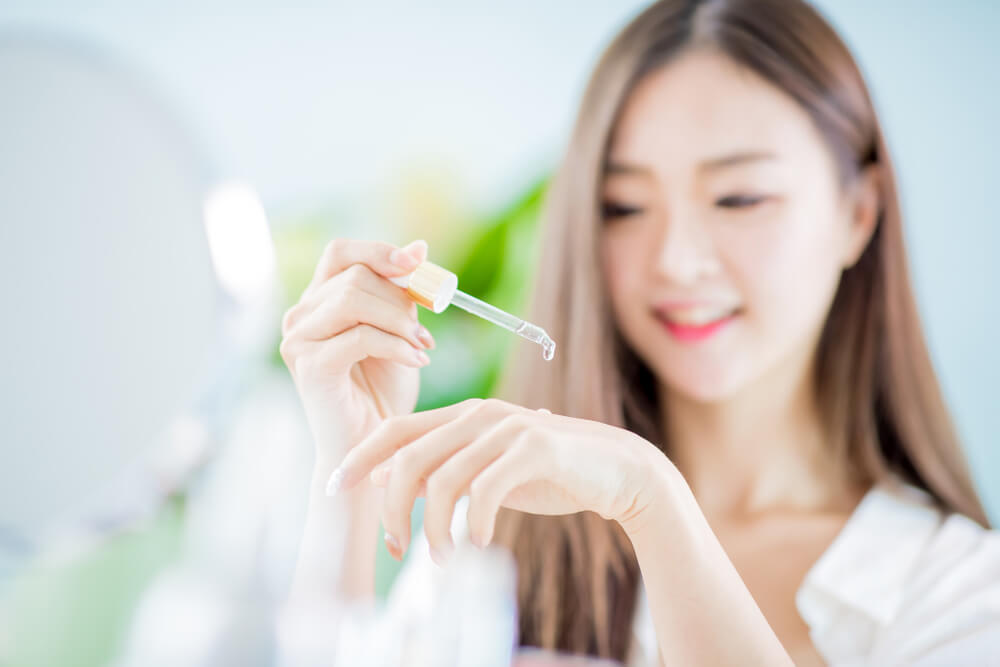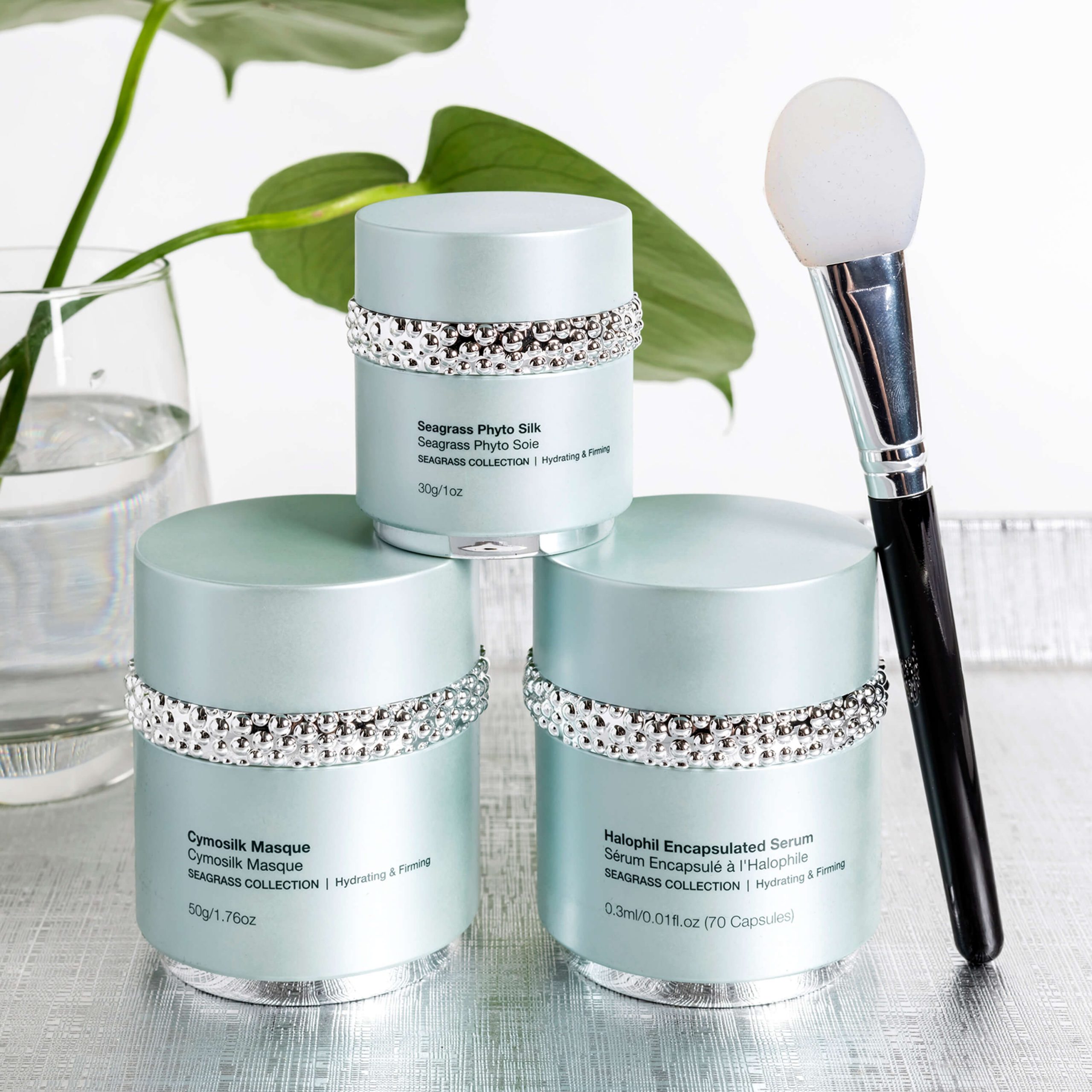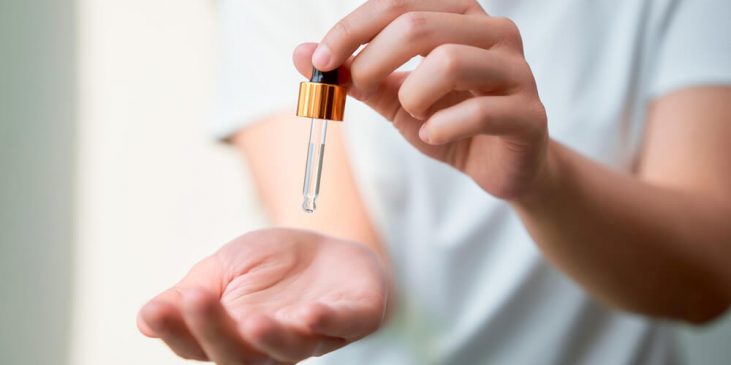If you found yourself rereading “Squalane vs Squalene” and trying to decipher the difference, you are not alone. What may seem like a tiny difference in spelling is actually an important difference in ingredient structure.
We are here to break down the mystery for you. Let us delve into the secrets behind Squalane vs Squalene and everything you need to know.
First – What is Squalene and Squalane?

Squalene and Squalane are two very closely related oils that you may find listed on the ingredient label of many skincare products. Squalene is naturally found in your skin and makes up 10% of your skin’s lipids.
The ingredient was discovered outside of the human body by Dr. Mistumaru, a Japanese researcher for Tokyo Industrial Testing Station, in 1906 and named after the genus of sharks, Squalus.
Squalane is very similar to squalene and we will explore the key differences throughout this article.
The Ethical Concerns of Squalene
Squalene – note the letter e instead of a – was originally derived from the liver of deep-sea sharks. As a popular ingredient used in the cosmetic and pharmaceutical industry, this created a serious problem for preserving the sanctity of our planet.
Found in their livers, sharks provide the single largest and cheapest source of squalene. Due to the slow maturity rate of sharks and the popularity of this ingredient, the harvesting of squalene began to hurt the population of these beautiful creatures.
According to Bloom, a non-profit organization dedicated to marine preservation, 2.7 million sharks are captured every year for the squalene oil contained within their livers.
Are there any safe, ethical sources of squalene? Thankfully, yes.
There is a way to enjoy the benefits of squalene in a sustainable, vegan-friendly way. Squalene can be derived from plant-based sources such as olive oil. During the refining process of some plant oils, squalene can be extracted.
Unfortunately, plant-based sources do not yield as much squalene and thus it requires more material. More material needs equal higher costs; however, ethical harvesting and preservation practices are worth this price.
It is interesting to note that this precious lipid also occurs naturally in your skin, but production decreases over time which may cause dryness and undesirable visible aging effects.

Advantages of Squalene
Squalene is a wonderous lipid (fat) that hydrates the skin. The benefits of a well-hydrated complexion include:
- Plumper-looking skin
- Reduced feeling of irritation
- Minimized appearance of wrinkles and fine lines
- Smooth-feeling texture
- Even-looking tone
It is easy to see why it is vital to ensure your skincare regimen includes robust hydration.
Disadvantages of Squalene
This polyunsaturated hydrocarbon has one major disadvantage that completely negates all of the above benefits.
It is not a stable ingredient…
When exposed to oxygen, such as through skin application, squalene begins to oxidize. The oxidization process may even create “adverse skin conditions,” according to a scientific report published in 2018.
This is where squalane comes in to save your skin.
What is Squalane?

Through the process of hydrogenation, squalene can become stable.
What is hydrogenation?
The hydrogenation process can be used to alter properties such as flavor and stability in a variety of oils, making it a common practice in the cosmetic and food industry. In short, a catalyst (sometimes nickel) and hydrogen gas are mixed into squalene and a reaction occurs. During the chemical reaction, various properties are altered in the original oil. One of the properties that can be altered is oxidization speed, also known as shelf life. This means that the oil becomes more stable. When the appropriate alterations have been reached, the catalyst is filtered out for removal and the oil has become something new!
When squalene becomes squalene through hydrogenation, the stability allows you to reap all of the benefits of the powerful lipid without concern over oxidization.
Squalane is the next evolutionary step for squalene.
The two ingredients are incredibly close in name due to being very closely related, but you will want to make sure you see that second ‘a’ when reading product labels.
Advantages of Squalane
Your body’s natural production of squalene slows down as soon as the age of 30. You will begin to notice this as your skin feels dryer and rougher. Other signs you may notice that could be caused by squalene depletion are the appearance of small dark spots from sun exposure or acne, visible thin lines around the eyes and mouth, or the look of wrinkles.
Squalane helps to counter the appearance of all of that.
Is Squalane Right For My Skin?

If you are considering adding a new ingredient to your skincare lineup, it can seem like a daunting task. For those with sensitive or acne-prone skin, you have to ensure that anything new you apply doesn’t cause irritation or breakouts.
You can confidently add Squalane to your “Safe and Approved” list of ingredients.
Yes, even if you have a sensitive and acne-prone skin type.
Squalane scores a 0-1 out of 5 on the comedogenic scale. This low rating is a heaven-sent declaration for pores that tend to clog easily.
The lower the rating, the less likely that an oil is going to cause blemish appearances. If blemishes are a common occurrence for you, you’ll want to make sure you only use ingredients with a comedogenic rating under 2.
Additionally, this lightweight oil has very little chance of irritating the feel of your skin.
There is always a chance of an allergic reaction when trying any ingredient for the first time, so keep this in mind. You may be experiencing an allergic reaction if your skin begins to feel extra itchy, swollen, or looks red.
Can I Use Squalane In My Hair?
Squalane is a truly versatile oil and can be useful when applied to your strands. Dry hair is at greater risk of developing split ends and breakage. It can also have a dull and frizzy appearance.
To give your hair a dose of luster, a lightweight oil is necessary. Massaging just a few drops of squalane into your hair can:
- Tame the feel of frizz
- Give a healthy shine
- Lessen the appearance of split ends
It is recommended to use squalane as a pre-shower treatment followed up by a sulfate-free shampoo and conditioner to improve moisture lock-in. Alternatively, it can be applied to the ends of dry hair.
How To Include Squalane In Your Skincare Routine
You could buy 100% vegan squalane oil, but an easier way to add squalane into your skincare routine is to simply look for products that contain this staple.
Typically, you will find squalane in products that promote hydration. Creams and masks are an excellent choice to find squalane in since you will not be rinsing the product off and can enjoy how soothed the ingredient makes your skin feel.
Our favorite products to add to your routine are…
Seagrass Cymosilk Masque

Our Seagrass Cymosilk Masque is a luxurious once-a-week treatment to pamper your complexion. Squalane is complimented by Vitamin A to reduce the appearance of fine lines and wrinkles.
The unique mask formula requires no rinsing as it transforms into absorbable water droplets for a glass-like finish. Your skin’s texture will feel smooth and refined on the outside while feeling purified from within.
Coralline Collagen Wrinkle IV Rescue
Give your skin an instant glow with the Coralline Collagen Wrinkle IV Rescue. Whether you are headed out for a date or a charity banquet, the people around you will be in awe of your smooth, youthful complexion. Squalane is paired with hyaluronic acid for intense hydration and Vitamin E to improve the appearance of wrinkle depth.
Feeling Confused Still?
If you’re still feeling a little confused about squalane vs squalene, it is OK. Here is a little cheat sheet of everything you need to know. Feel free to refer to these bullet points until you can familiarize yourself more with the details we provided.
- Squalene was originally found in and extracted from shark livers; however, more sustainable methods are being implemented such as harvesting squalene from plant-based carriers.
- Squalene oxidizes when exposed to oxygen, which negates any beneficial properties.
- Through the hydrogenation process, squalene becomes squalane.
- Squalane is far more stable than squalene and has a longer shelf-life than its predecessor.
- The versatility of squalane allows it to be lightweight, yet moisturizing.
- Squalane is ideal for all complexion types.
If you haven’t already, give squalane a try in your routine. There’s very little to lose and a whole lot of benefits to gain!



0 comments on “Squalane vs Squalene: Everything You Need to Know”